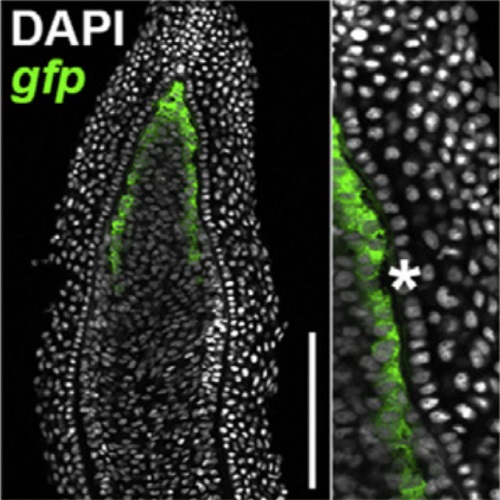Wnt/β-catenin signaling defines organizing centers that orchestrate growth and differentiation of the regenerating zebrafish caudal fin.
Zebrafish regenerate their fins via the formation of a population of progenitor cells, the blastema. Wnt/β-catenin signaling is essential for blastemal cell proliferation and patterning of the overlying epidermis. Yet, we find that β-catenin signaling is neither active in the epidermis nor the majority of the proliferative blastemal cells. Rather, tissue-specific pathway interference indicates that Wnt signaling in the nonproliferative distal blastema is required for cell proliferation in the proximal blastema, and signaling in cells lining the osteoblasts directs osteoblast differentiation. Thus, Wnt signaling regulates epidermal patterning, blastemal cell proliferation, and osteoblast maturation indirectly via secondary signals. Gene expression profiling, chromatin immunoprecipitation, and functional rescue experiments suggest that Wnt/β-catenin signaling acts through Fgf and Bmp signaling to control epidermal patterning, whereas retinoic acid and Hedgehog signals mediate its effects on blastemal cell proliferation. We propose that Wnt signaling orchestrates fin regeneration by defining organizing centers that instruct cellular behaviors of adjacent tissues.
Back to list
